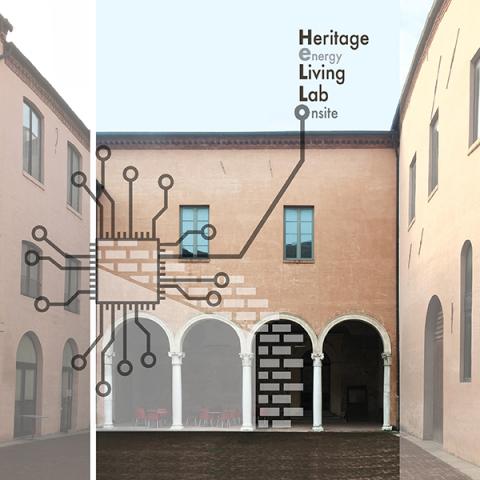dsplmr_2022
Il progetto HeLLo
Gli edifici storici rappresentano una parte significativa del patrimonio costruito, in particolare per il loro valore culturale. Un modo efficacie per preservare questa importante testimonianza per il futuro è quello di adeguarla costantemente alle esigenze evolutive della società. Le innumerevoli possibilità di intervento danno luogo a interessanti sperimentazioni per l’upgrade funzionale e prestazionale degli edifici, ma aumentano, conseguentemente, la possibilità di insorgenza di rischi per la conservazione dei fabbricati. I rischi connessi a interventi poco consapevoli o mal progettati si aggiungo, infatti, a quelli causati dal degrado derivante dal fisiologico deterioramento delle strutture e degli apparati decorativi. Dopo una disamina dei principali fattori di rischio di danneggiamento naturale dei fabbricati, utili anche per l’impostazione di progetti di restauro e retrofit energetico, l’articolo documenta brevemente la ricerca europea HeLLo che si occupa di studiare i principali rischi connessi all’intervento di innalzamento prestazionale e alle attività di monitoraggio di edifici antichi.
The HeLLo project
Historic buildings represent a significant part of the built heritage, particularly for their cultural value. One important way of preserving built heritage for the future is to guarantee the prolonging and continuous use of such buildings, constantly adapted to the evolutionary needs of society (ad example people accessibility and/or comfort levels or improved energy performance levels). Rethinking an historic building to accommodate new uses enhances preserving it in the memory of all, avoiding its transformation into a museum.
As known, specific conservation obligations are due when a building is listed (subjected to a protection measures). This heritage cannot be destroyed, deteriorated, damaged or used for purposes that are not compatible with their historical or artistic nature, in other words to prejudice its conservation (Italian legislative decree 42/2004, article 20, paragraph 1).
In one hand, the countless possibilities of intervention give rise to interesting experiments for the functional and performance upgrading of buildings. On the other, such interventions increase the likelihood of risks arising for the conservation of buildings: inherent risks due to the degradation produced by the physiological deterioration of the structures and decorative apparatuses, added of those related to inadequate or poorly designed interventions.
Understanding all the potential risks related to any intervention (starting from those which concern the natural degradation of the building) is therefore of utmost importance.
The importance of determining the condition of the building as the first step to be taken to plan adequate and effective conservation measures for cultural heritage has been remarked in several European projects as well as in the “Linee guida di indirizzo per il miglioramento dell'efficienza energetica nel patrimonio culturale” del MiBACT (2015). It has been suggested that this survey is supported by a document useful for the "assessment of the conditions and risks of the building under study" in which the type and state of conservation of all the technological elements of the building, its testimonial and architectural characteristics, dimensional and plant engineering aspects, movable elements or technical installations and equipment are indicated (Ministry of Cultural Heritage and Activities and Tourism, 2015 - Appendix).
In this context, the article proposes an analysis of the main risk factors of natural damage to buildings, which are also useful for setting up restoration and energy retrofit projects. After this, a documentation of a European research, the HeLLo project (Heritage energy Living Lab onsite), is followed. This research deals mainly with the study of the risks associated to the interventions of energy retrofit of such buildings related with the choice of the materials and the typology of installation, including also the risks associated to the monitoring activities conducted in historic buildings.

